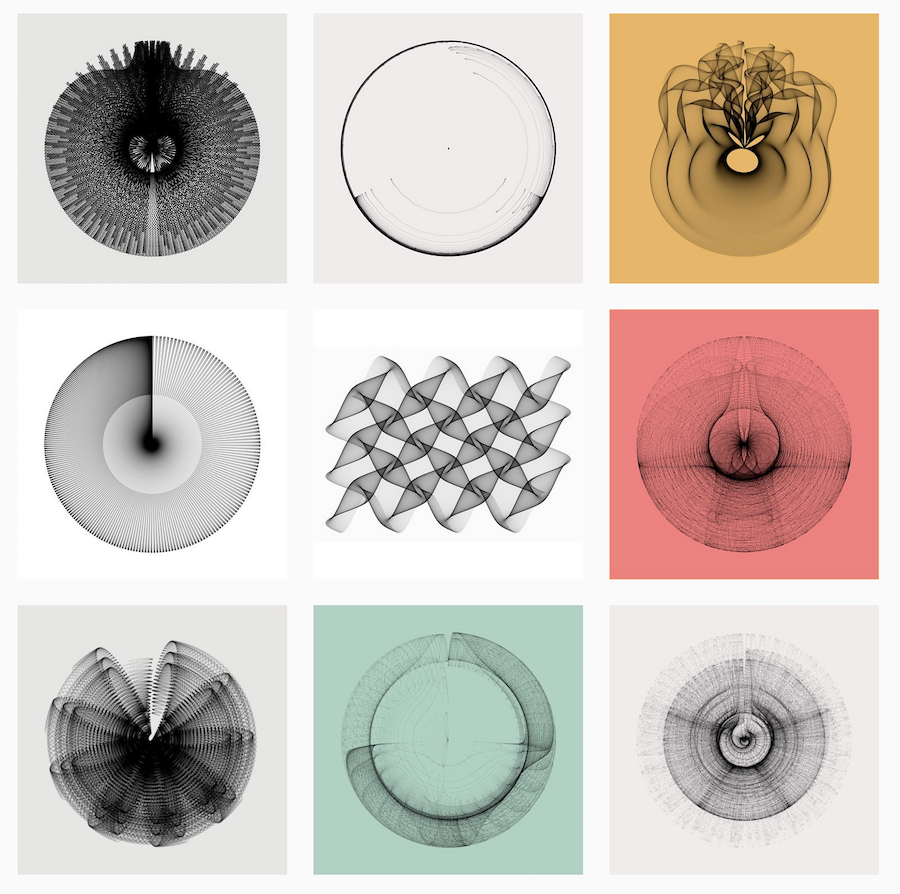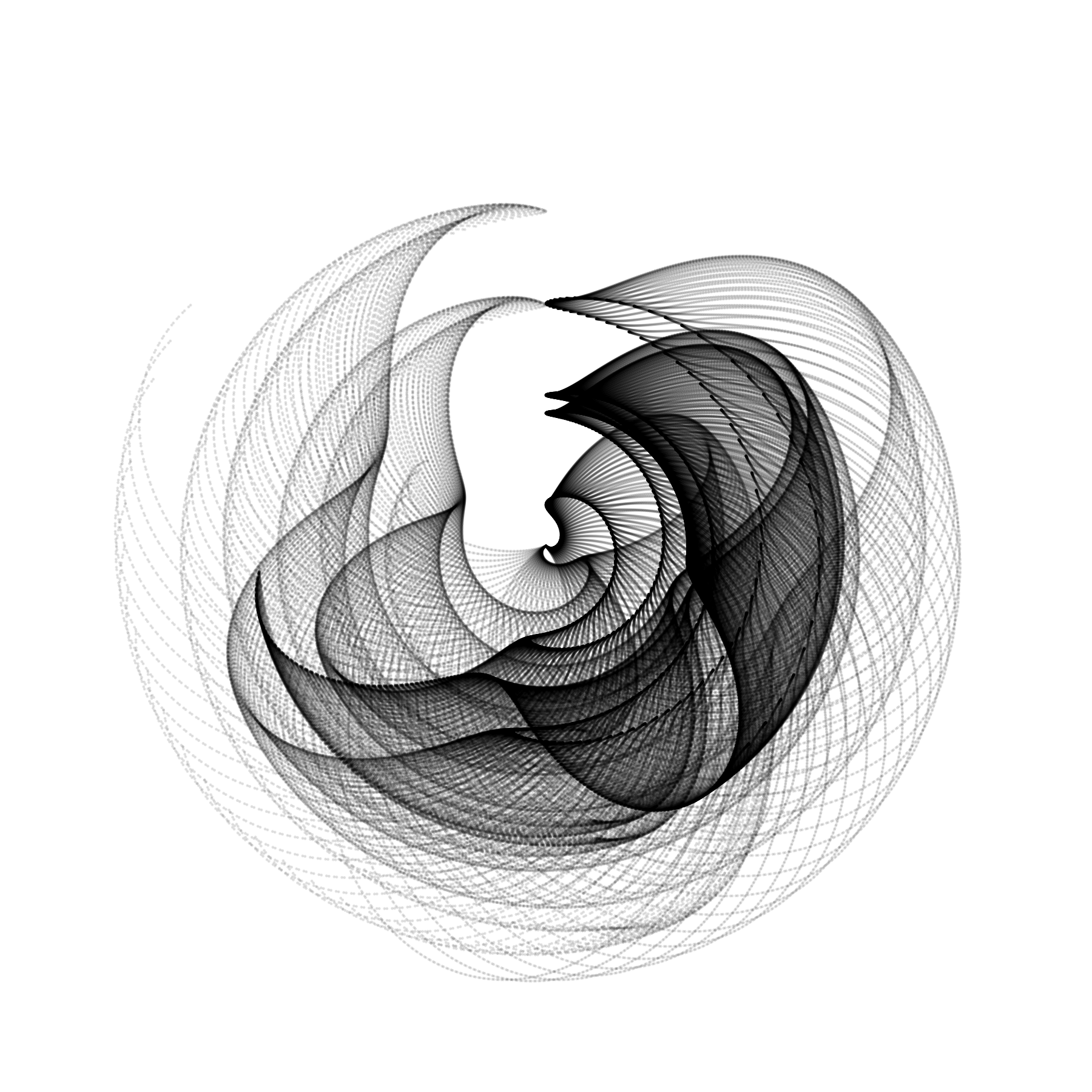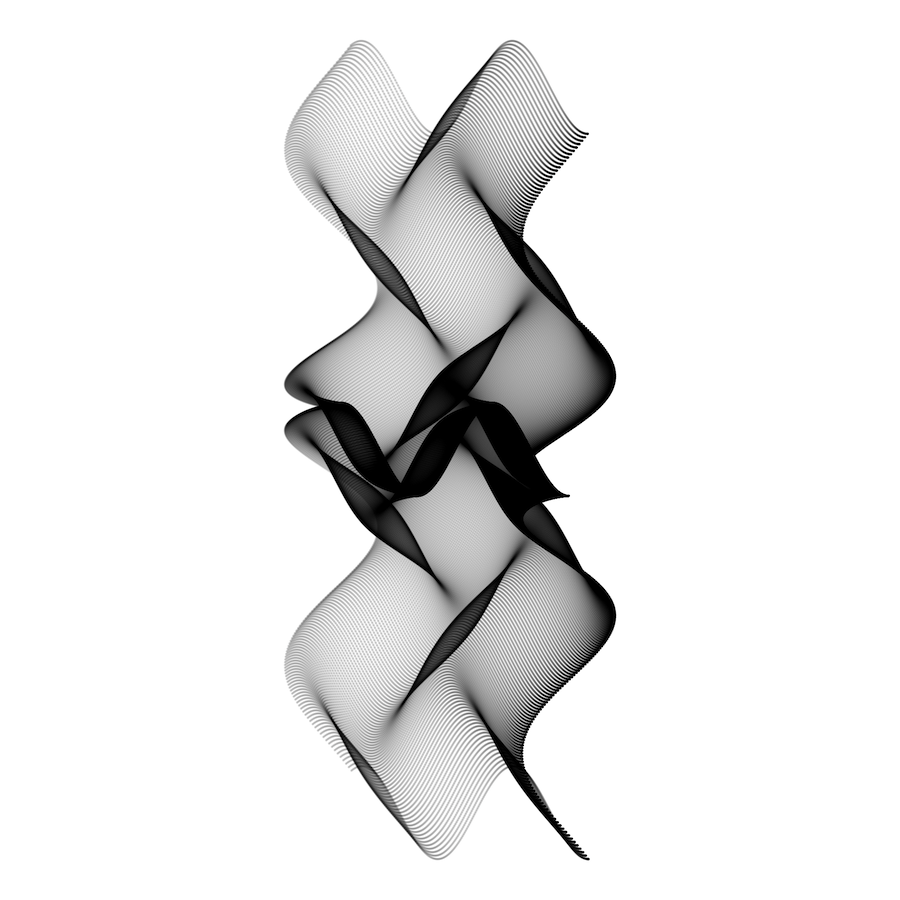This package collects more and more stars here on Github and is widely used for NFTs. Just browse on NFT platforms - it won't take you long to discover patterns be that might be decandents of this repository.
I would like to clarify: I am not a fan of Blockchain, NFT and Web3.
Why? Read this text: "The Third Web" by @tante.
Create Generative Art with R.
One overly simple but useful definition is that generative art is art programmed using a computer that intentionally introduces randomness as part of its creation process. -- Why Love Generative Art? - Artnome
The R package generativeart let's you create images based on many thousand points.
The position of every single point is calculated by a formula, which has random parameters.
Because of the random numbers, every image looks different.
In order to make an image reproducible, generative art implements a log file that saves the file_name, the seed and the formula.
You can install the package with the devtools package directly from Github:
devtools::install_github("cutterkom/generativeart")generativeart uses the packages ggplot2, magrittr, purrr and dplyr.
The package works with a specific directory structure that fits my needs best.
The first step is to create it with setup_directories().
All images are saved by default in img/everything/. I use img/handpicked/ to choose the best ones.
In logfile/ you will find a csv file that saves the file_name, the seed and the used formula.
library(generativeart)
# set the paths
IMG_DIR <- "img/"
IMG_SUBDIR <- "everything/"
IMG_SUBDIR2 <- "handpicked/"
IMG_PATH <- paste0(IMG_DIR, IMG_SUBDIR)
LOGFILE_DIR <- "logfile/"
LOGFILE <- "logfile.csv"
LOGFILE_PATH <- paste0(LOGFILE_DIR, LOGFILE)
# create the directory structure
generativeart::setup_directories(IMG_DIR, IMG_SUBDIR, IMG_SUBDIR2, LOGFILE_DIR)
# include a specific formula, for example:
my_formula <- list(
x = quote(runif(1, -1, 1) * x_i^2 - sin(y_i^2)),
y = quote(runif(1, -1, 1) * y_i^3 - cos(x_i^2))
)
# call the main function to create five images with a polar coordinate system
generativeart::generate_img(formula = my_formula, nr_of_img = 5, polar = TRUE, filetype = "png", color = "black", background_color = "white")
- You can create as many images as you want by setting
nr_of_img. - For every image a seed is drawn from a number between 1 and 10000.
- This seed determines the random numbers in the formula.
- You can choose between cartesian and polar coordinate systems by setting
polar = TRUEorpolar = FALSE - You can choose the colors with
color = 'black'andbackground_color = 'hotpink' - You can save the output image in various formats.
Default is
png, the alternatives are defined by thedeviceoptions ofggplot::ggsave(). - the formula is a
list()
It is a good idea to use the sine and cosine in the formula, since it guarantees nice shapes, especially when combined with a polar coordinate system. One simple example:
my_formula <- list(
x = quote(runif(1, -1, 1) * x_i^2 - sin(y_i^2)),
y = quote(runif(1, -1, 1) * y_i^3 - cos(x_i^2))
)
generativeart::generate_img(formula = my_formula, nr_of_img = 5, polar = TRUE, color = "black", background_color = "white")
Two possible images:
The corresponding log file looks like that:
| file_name | seed | formula_x | formula_y |
|---|---|---|---|
| 2018-11-16-17-13_seed_1821.png | 1821 | runif(1, -1, 1) * x_i^2 - sin(y_i^2) | runif(1, -1, 1) * y_i^3 - cos(x_i^2) |
| 2018-11-16-17-12_seed_5451.png | 5451 | runif(1, -1, 1) * x_i^2 - sin(y_i^2) | runif(1, -1, 1) * y_i^3 - cos(x_i^2) |
The basic concept is heavily inspired by Fronkonstin's great blog.


